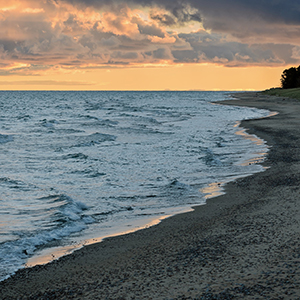Lake Maggiore: geomorphological genesis, lake-level evolution, and present and future ecosystems importance

Submitted: 30 May 2023
Accepted: 23 August 2023
Published: 18 September 2023
Accepted: 23 August 2023
Abstract Views: 785
PDF: 139
HTML: 49
HTML: 49
Publisher's note
All claims expressed in this article are solely those of the authors and do not necessarily represent those of their affiliated organizations, or those of the publisher, the editors and the reviewers. Any product that may be evaluated in this article or claim that may be made by its manufacturer is not guaranteed or endorsed by the publisher.
All claims expressed in this article are solely those of the authors and do not necessarily represent those of their affiliated organizations, or those of the publisher, the editors and the reviewers. Any product that may be evaluated in this article or claim that may be made by its manufacturer is not guaranteed or endorsed by the publisher.
Similar Articles
- Emiliya KIRILOVA, Oliver HEIRI, Dirk ENTERS, Holger CREMER, André F. LOTTER, Bernd ZOLITSCHKA, Thomas HÜBENER, Climate-induced changes in the trophic status of a Central European lake , Journal of Limnology: Vol. 68 No. 1 (2009)
- Ernst KIEHL, Hieronymus DASTYCH, Jochen D'HAESE, Hartmut GREVEN, A cDNA library of the eutardigrade Hypsibius klebelsbergi Mihelčič, 1959 and analysis of the actin gene , Journal of Limnology: Vol. 66 No. s1 (2007): 10th International Symposium on Tardigrada
- Sven E. JØRGENSEN, Experience from ILEC's project on Environmental Education , Journal of Limnology: Vol. 62 No. s1 (2003): Residence Time in Lakes: Science, Management, Education
- Eduardo SUÁREZ-MORALES, Manuel ELÍAS-GUTIÉRREZ, On the taxonomical status of Arctodiaptomus dampfi Brehm (Crustacea: Copepoda: Diaptomidae) with comments on A. dorsalis (Marsh) , Journal of Limnology: Vol. 60 No. 1 (2001)
- Gerhard MAIER, Berit SPETH, Wolfgang ARP, Mandy BAHNWART, Peter KASPRZAK, New records of the rare glacial relict Eurytemora lacustris (Poppe 1887) (Copepoda; Calanoida) in atypical lake habitats of northern Germany , Journal of Limnology: Vol. 70 No. 1 (2011)
- Roberto BERTONI, Roberta PISCIA, Cristiana CALLIERI, Horizontal heterogeneity of seston, organic carbon and picoplankton in the photic zone of Lago Maggiore, Northern Italy , Journal of Limnology: Vol. 63 No. 2 (2004)
- Richard F. WRIGHT, Bernard J. COSBY, Recovery of acidified mountain lakes in Norway as predicted by the MAGIC model , Journal of Limnology: Vol. 63 No. 1 (2004)
- Kelman R. WIEDER, Dale H. VITT, Medora BURKE-SCOLL, Kimberli D. SCOTT, Melissa HOUSE, Melanie A. VILE, Nitrogen and sulphur deposition and the growth of Sphagnum fuscum in bogs of the Athabasca Oil Sands Region, Alberta , Journal of Limnology: Vol. 69 No. s1 (2010): Impacts of sulphur and nitrogen deposition in western Canada
- Javier Alcocer, Martín Merino-Ibarra, Elva Escobar-Briones, Proceedings of the 6th National Congress of Limnology - Introduction to the Proceedings , Journal of Limnology: Vol. 75 No. s1 (2016): Proceedings of the 6th National Congress of Limnology
- Aldo MARCHETTO, Rosario MOSELLO, Gabriele TARTARI, Michele BIANCHI, Helga GEISS, Giorgio SERRINI, Gianna SERRINI-LANZA, Herbert MUNTAU, Performances of analytical methods for freshwater analysis assessed through intercomparison exercises. II. Major ions. , Journal of Limnology: Vol. 58 No. 1 (1999)
<< < 88 89 90 91 92 93 94 95 96 97 > >>
You may also start an advanced similarity search for this article.

 https://doi.org/10.4081/jlimnol.2022.2146
https://doi.org/10.4081/jlimnol.2022.2146






